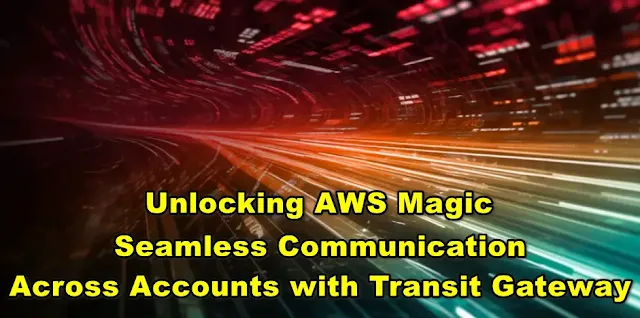
In the ever-expanding realm of cloud computing, AWS Transit Gateway emerges as a powerful enabler for bridging the gap between AWS resources across different accounts. Buckle up, fellow cloud adventurers, as we embark on a journey to understand the intricacies of establishing seamless communication using this mighty gateway.
Documentation: Keep detailed records of your setup. It’s your treasure map for troubleshooting.
Scaling: As your network grows, adapt your Transit Gateway configuration accordingly.
Remember, with AWS Transit Gateway, you’re not just building connections; you’re weaving a digital tapestry that spans accounts, regions, and possibilities. So go forth, network ninja!
References:
Understanding the Architecture
At its core, AWS Transit Gateway acts as a central hub—a digital nexus that connects multiple Amazon Virtual Private Clouds (VPCs) and even extends its reach to on-premises networks. Picture it as the grand conductor orchestrating a symphony of network connectivity.Key Steps to Setup
Let’s break down the steps to unlock this magic:- Creating the Transit Gateway:In your AWS account, create a Transit Gateway. Think of it as the heart of your network infrastructure.
- Configure it meticulously, ensuring route tables and attachments are in place.
Resource Sharing
- Made Easy:If you want to share your Transit Gateway with other AWS accounts, turn to AWS Resource Access Manager (RAM).
- Open the AWS RAM console, enable resource sharing within AWS Organizations (if applicable), and create a resource share for your Transit Gateway.
Transit Gateway Attachments
- Attach your VPCs to the Transit Gateway. These attachments are like bridges connecting your cloud islands.
- Ensure each VPC is linked appropriately to the Transit Gateway.
Configuring Route Tables
- The route tables associated with your Transit Gateway are like GPS systems for network traffic.
- Set up the necessary routes to guide traffic smoothly between VPCs and on-premises networks.
Validating the Setup
- Test connectivity. Ping, trace, and ensure your resources can talk to each other.
- Monitor network traffic, logs, and troubleshoot any hiccups.
Conclusion and Best Practices
As you traverse this cloud landscape, keep these best practices in mind:Security Groups and Network ACLs: Fine-tune security rules to allow traffic between connected VPCs.Documentation: Keep detailed records of your setup. It’s your treasure map for troubleshooting.
Scaling: As your network grows, adapt your Transit Gateway configuration accordingly.
Remember, with AWS Transit Gateway, you’re not just building connections; you’re weaving a digital tapestry that spans accounts, regions, and possibilities. So go forth, network ninja!
References:
AWS Transit Gateway Documentation
AWS Transit Gateway Quotas
AWS Transit Gateway Pricing
AWS Transit Gateway Quotas
AWS Transit Gateway Pricing
